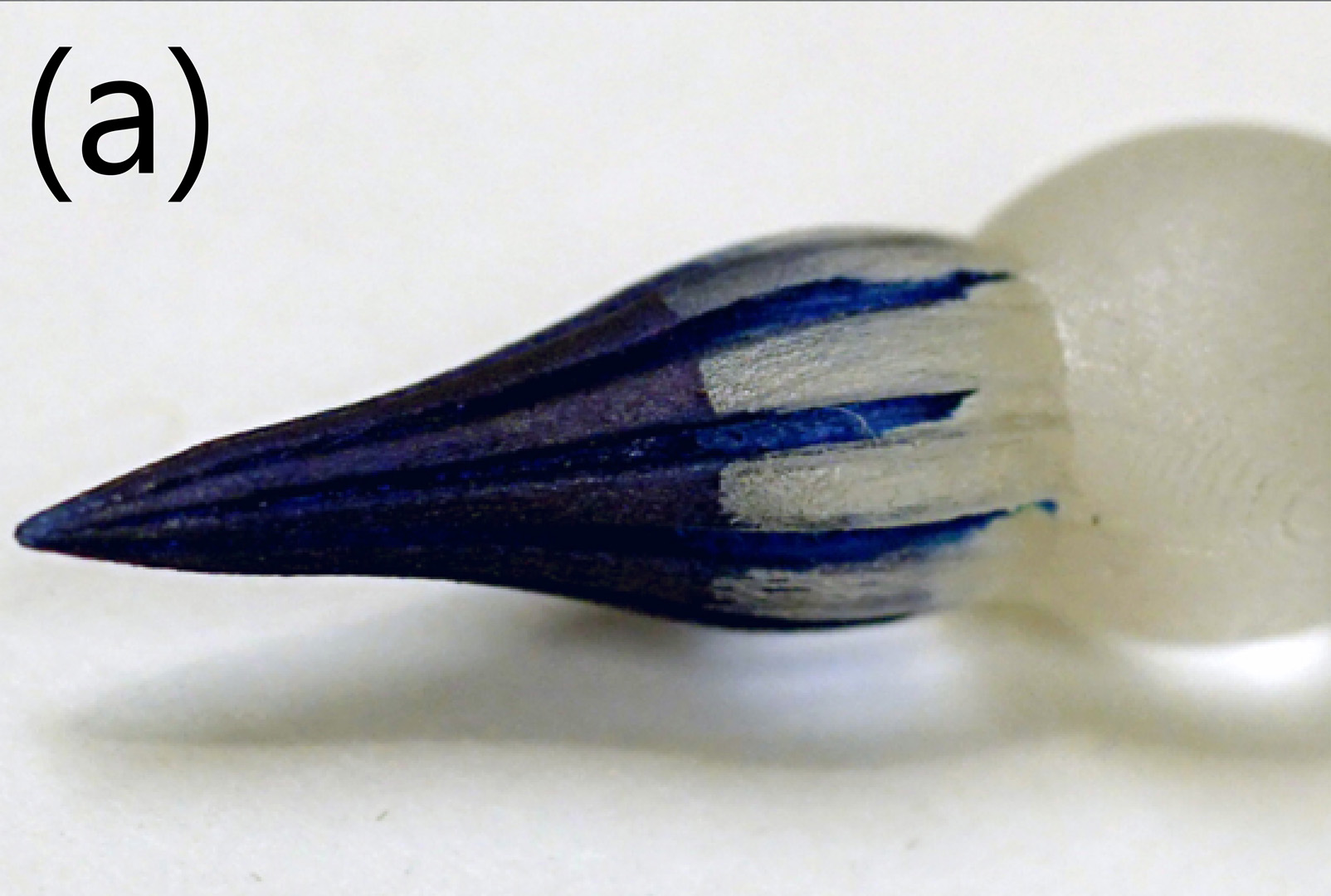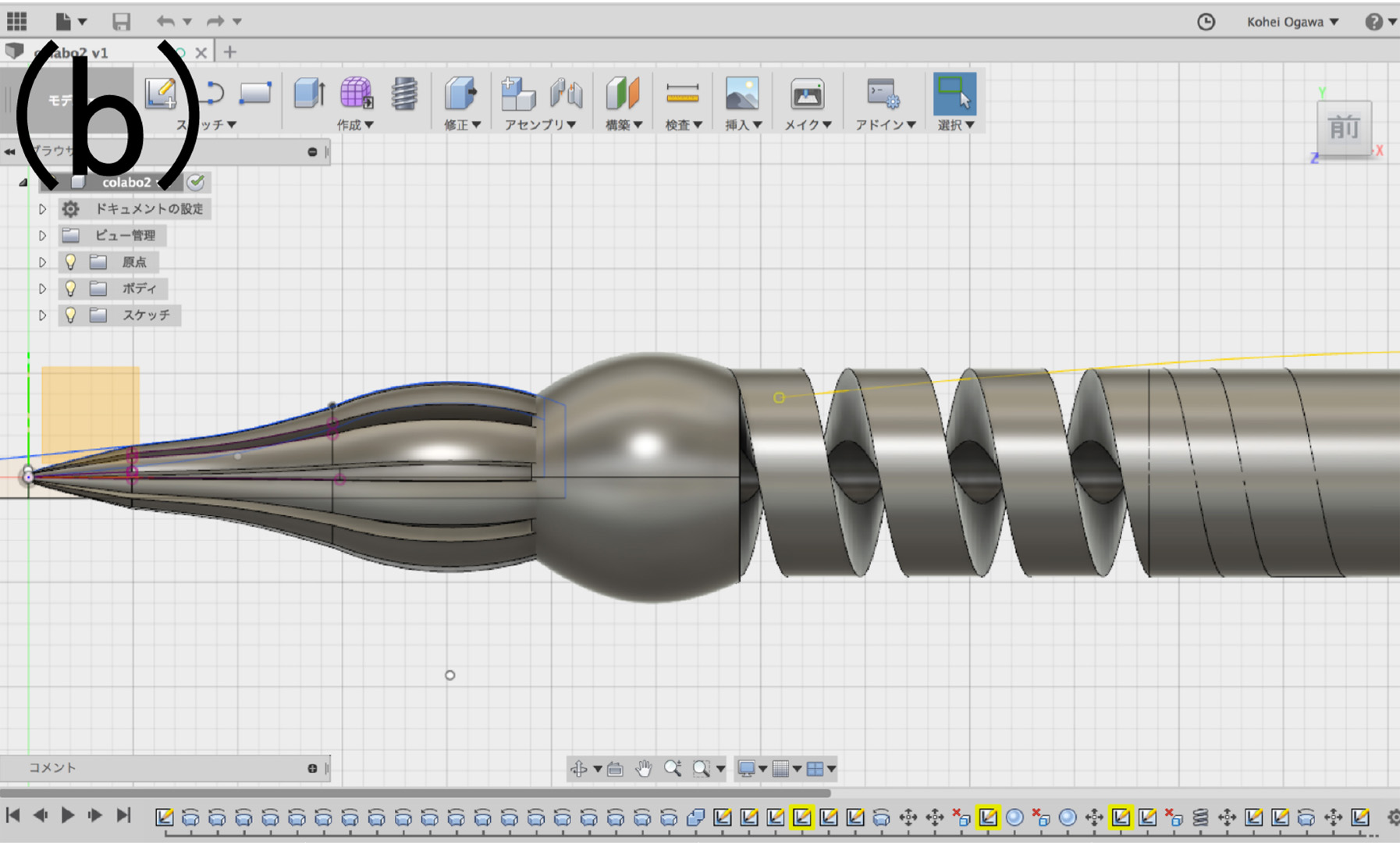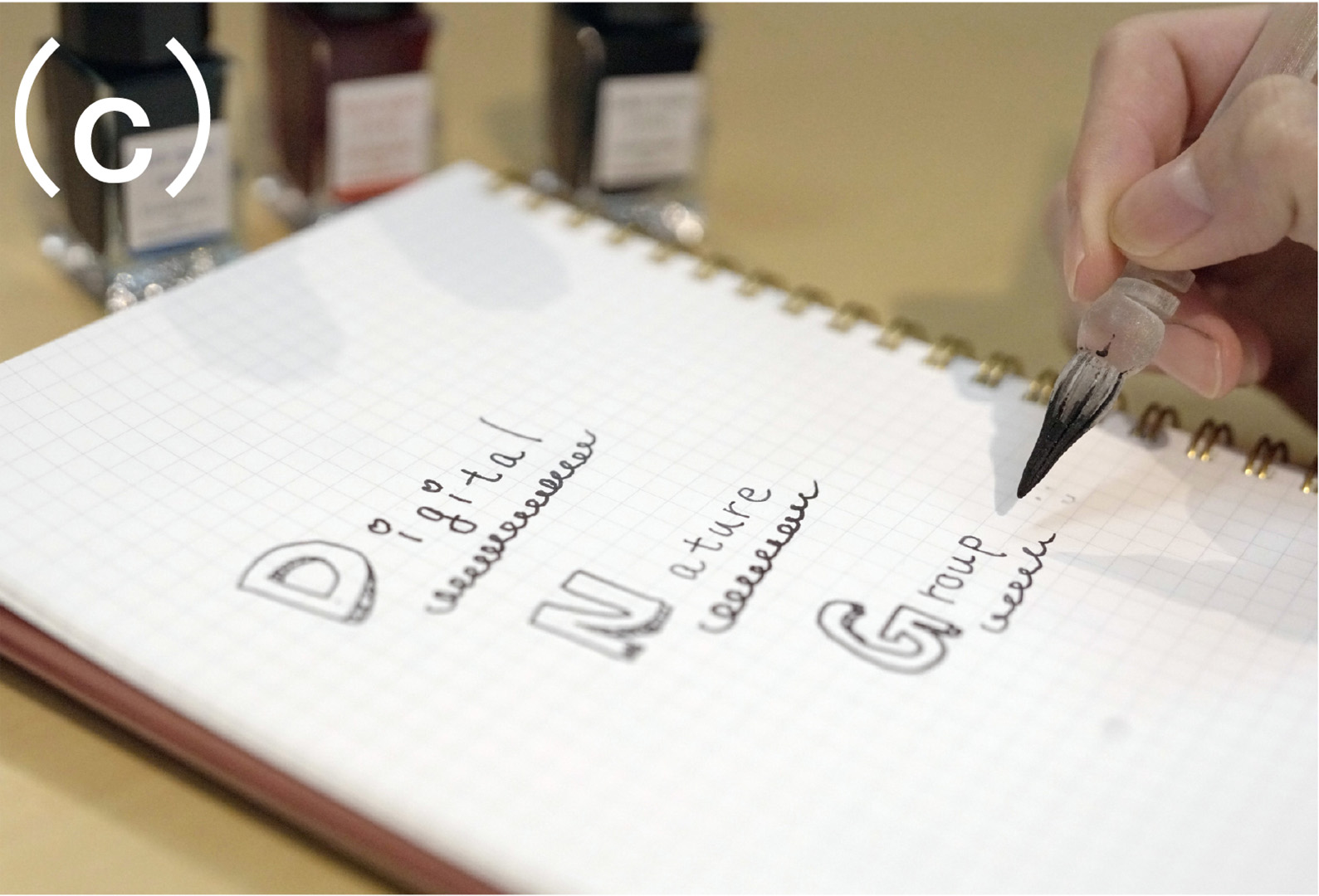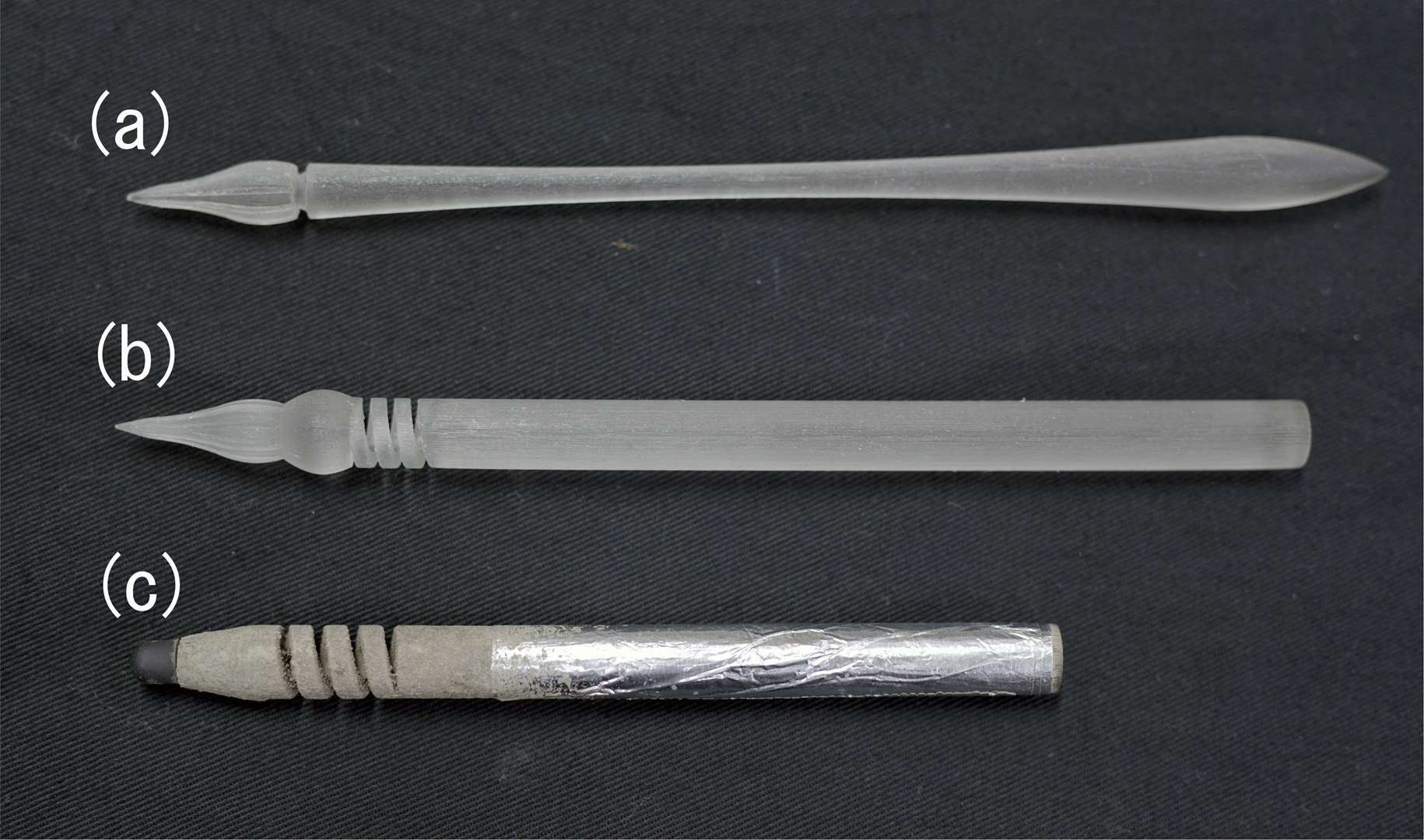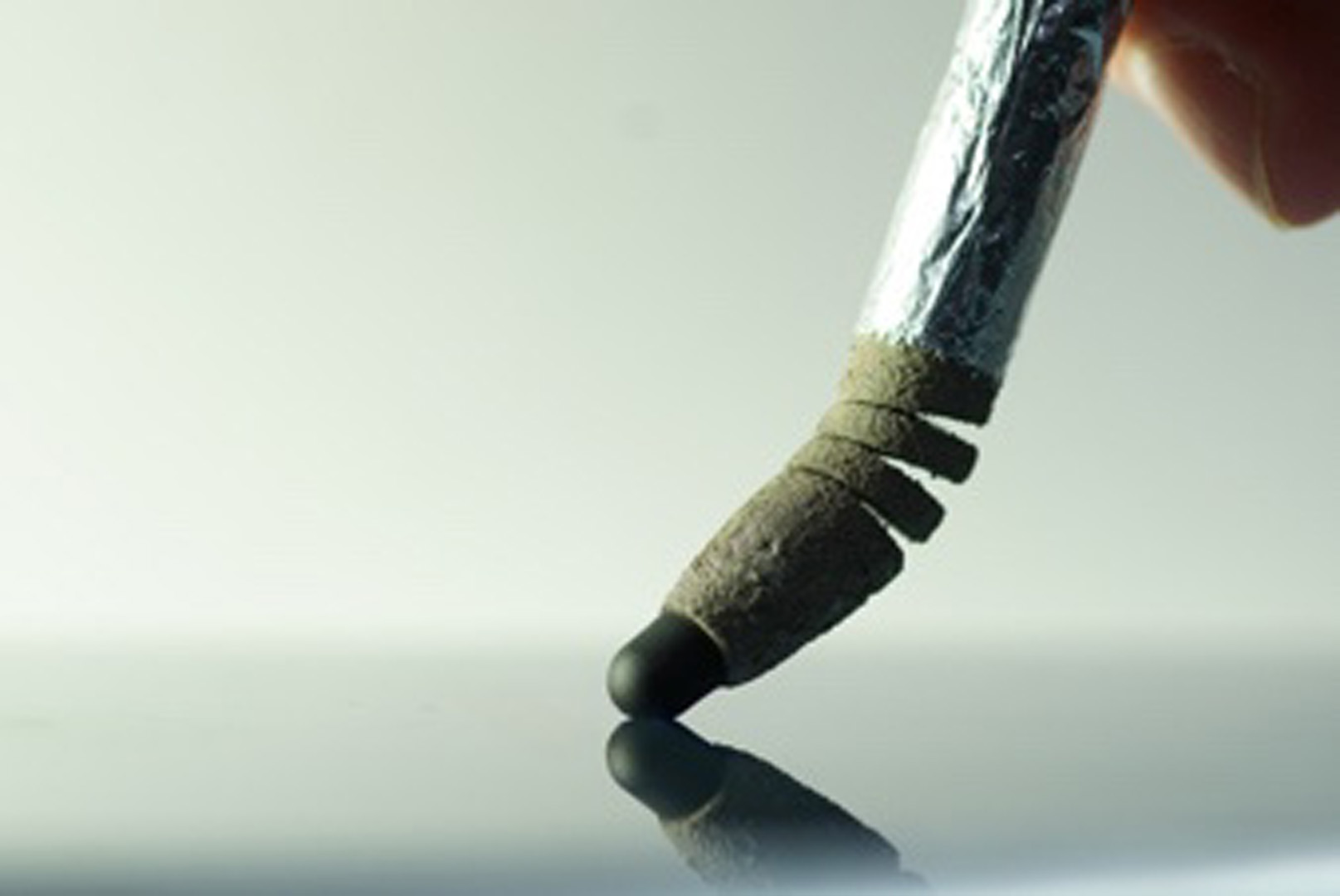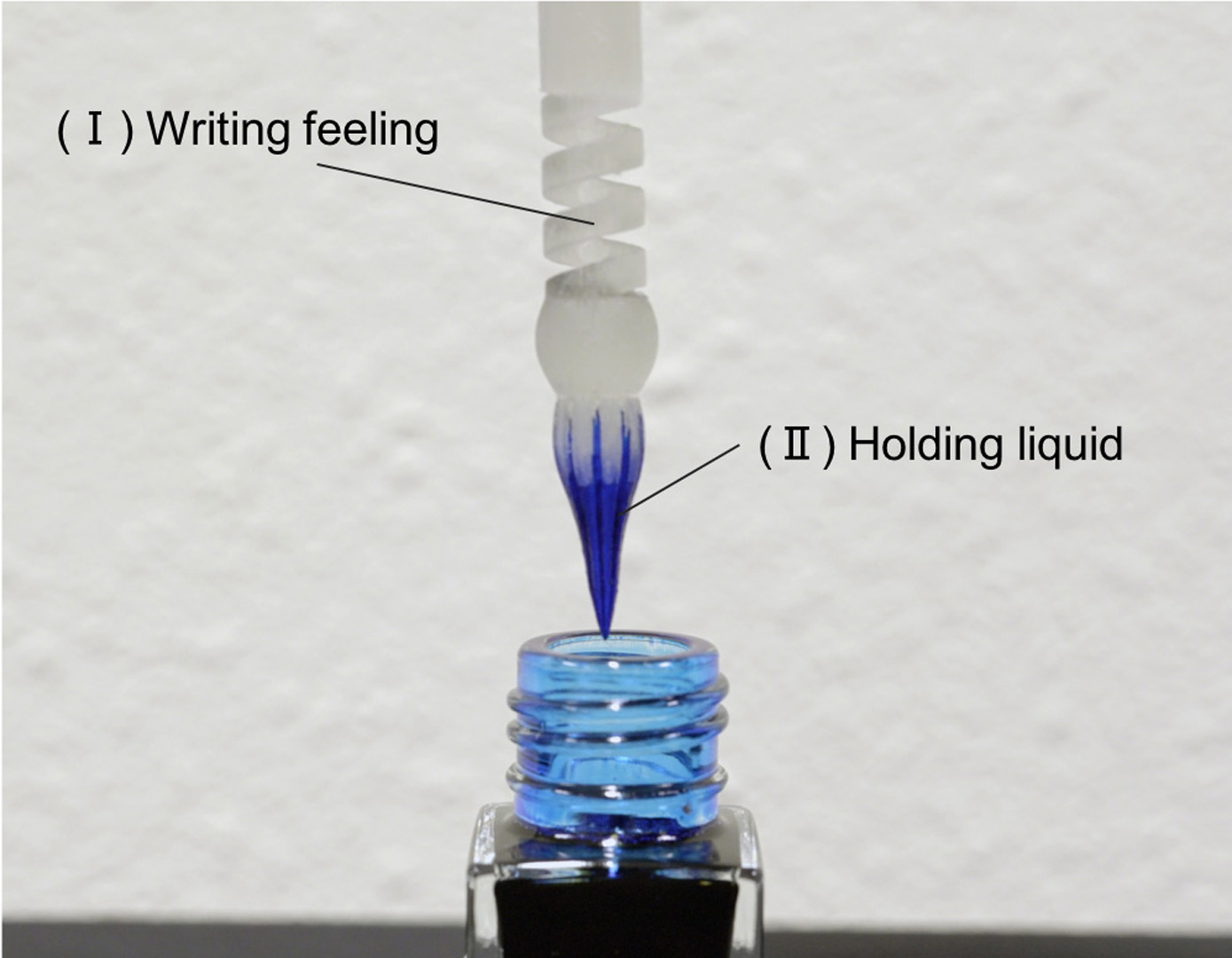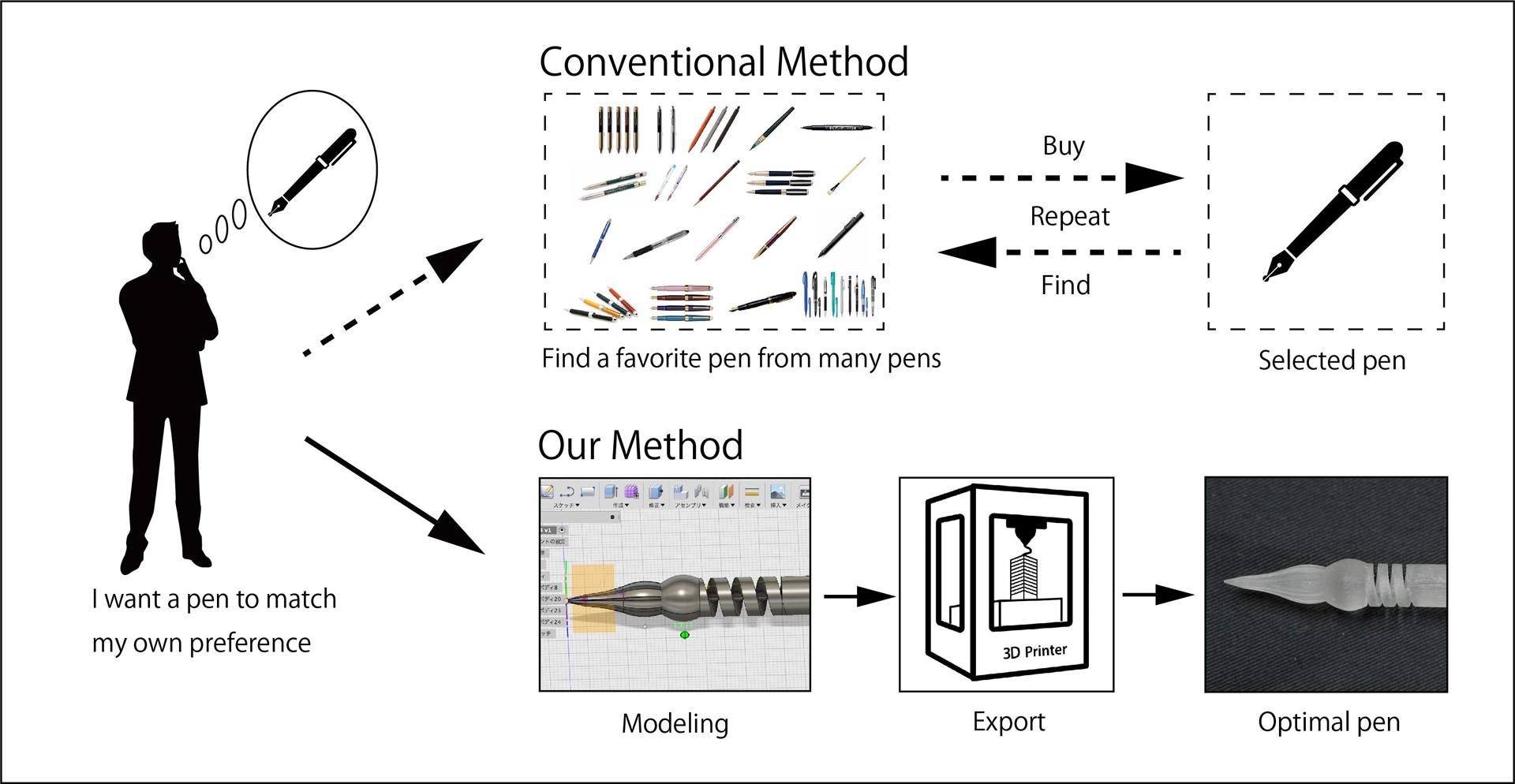“Design Method of Digitally Fabricated Spring Glass Pen” by Tanaka, Ogawa, Minagawa and Ochiai
Notice: Pod Template PHP code has been deprecated, please use WP Templates instead of embedding PHP. has been deprecated since Pods version 2.3 with no alternative available. in /data/siggraph/websites/history/wp-content/plugins/pods/includes/general.php on line 518
Conference:
- SIGGRAPH 2018
-
More from SIGGRAPH 2018:
Notice: Array to string conversion in /data/siggraph/websites/history/wp-content/plugins/siggraph-archive-plugin/src/next_previous/source.php on line 345

Notice: Array to string conversion in /data/siggraph/websites/history/wp-content/plugins/siggraph-archive-plugin/src/next_previous/source.php on line 345

Type(s):
Title:
- Design Method of Digitally Fabricated Spring Glass Pen
Presenter(s):
Description:
In this study, We propose a method to develop a spring glass dip pen by using a 3D printer and reproduce different types of writing feeling. There have been several studies on different types of pens to change the feel of writing. For example, EV-Pen [Wang et al. 2016] and haptics pens [Lee et al. 2004] changes the feel of pen writing with using vibration. However, our proposed method does not reproduce tactile sensation of softness by using vibrations. A pen is a part of our everyday life. Considering that there are so many types of pens available, there is a need to produce a pen suitable for individuals. A glass dip pen requires technology for its development. Glass dip pens, which were first developed in Japan, use the capillary phenomenon and require glass artisan skills for their development. Therefore, we developed our spring glass dip pen by imitating a glass dip pen using a 3D printer (Fig. 2(a)). More- over, we reproduced a new feel of writing and softness by applying the structure of a spring pen in our design method [Tanaka et al. 2017], which could not be reproduced using a general glass dip pen (Fig. 2(b)). Recently, stylus pens, which are used as digital terminals, have become popular. Generally, a commercially available stylus pen can only produce the feel of a hard touch when it touches the tablet screen. Therefore, we developed a soft touch pen, similar to a brush, with a spring pen’s structure using a 3D printer (Fig. 2(c)). The pen has many writing tastes, and there are various preferences depend- ing on people. Therefore, in this study, we propose a method of freely adjusting the softness of a pen and developing a user-desired pen.


